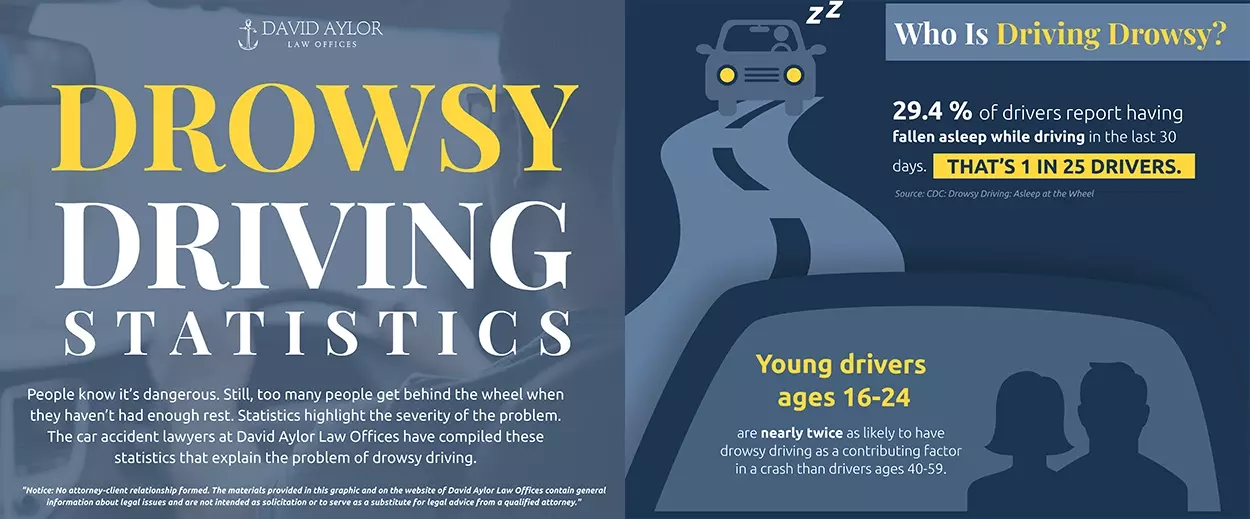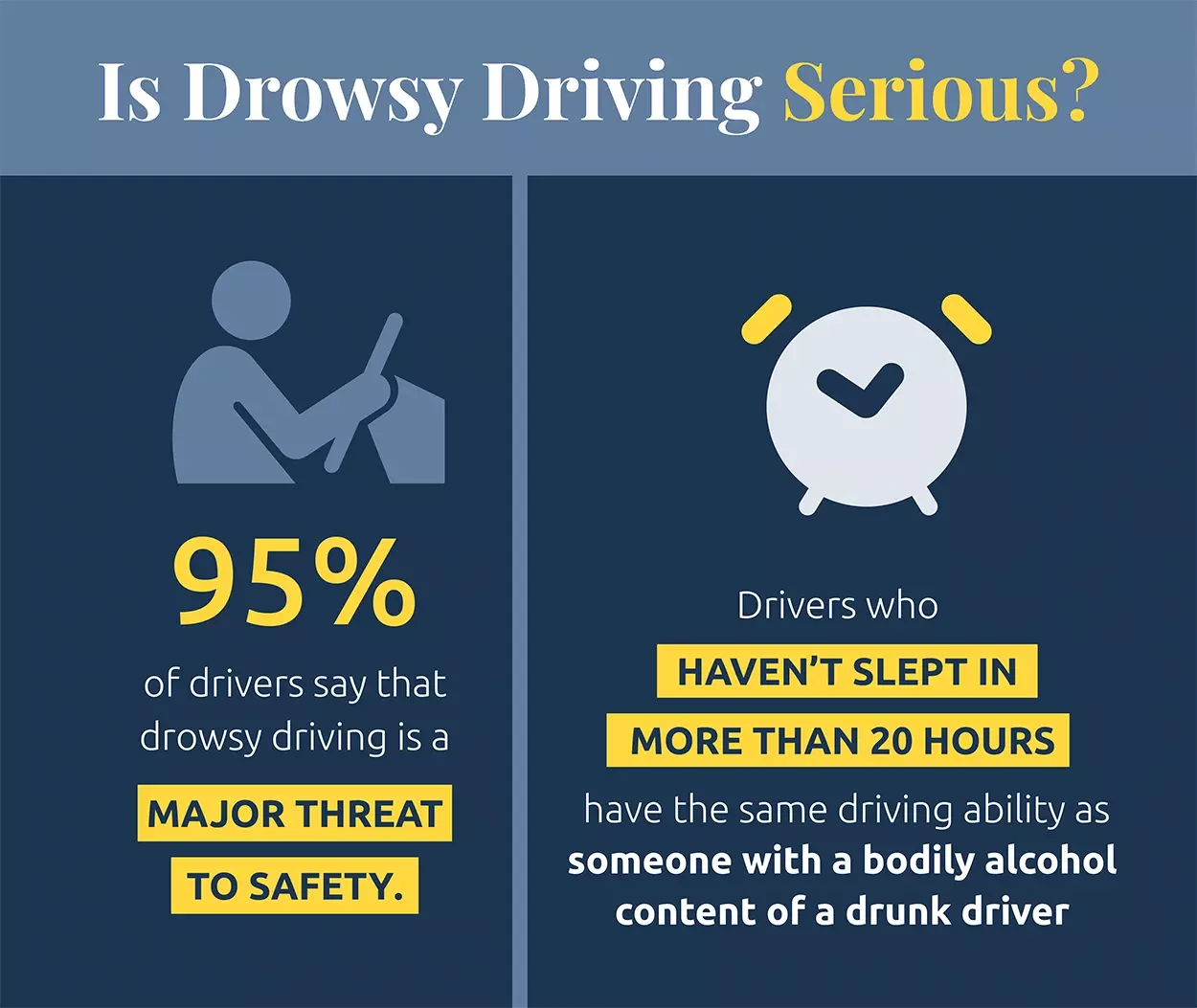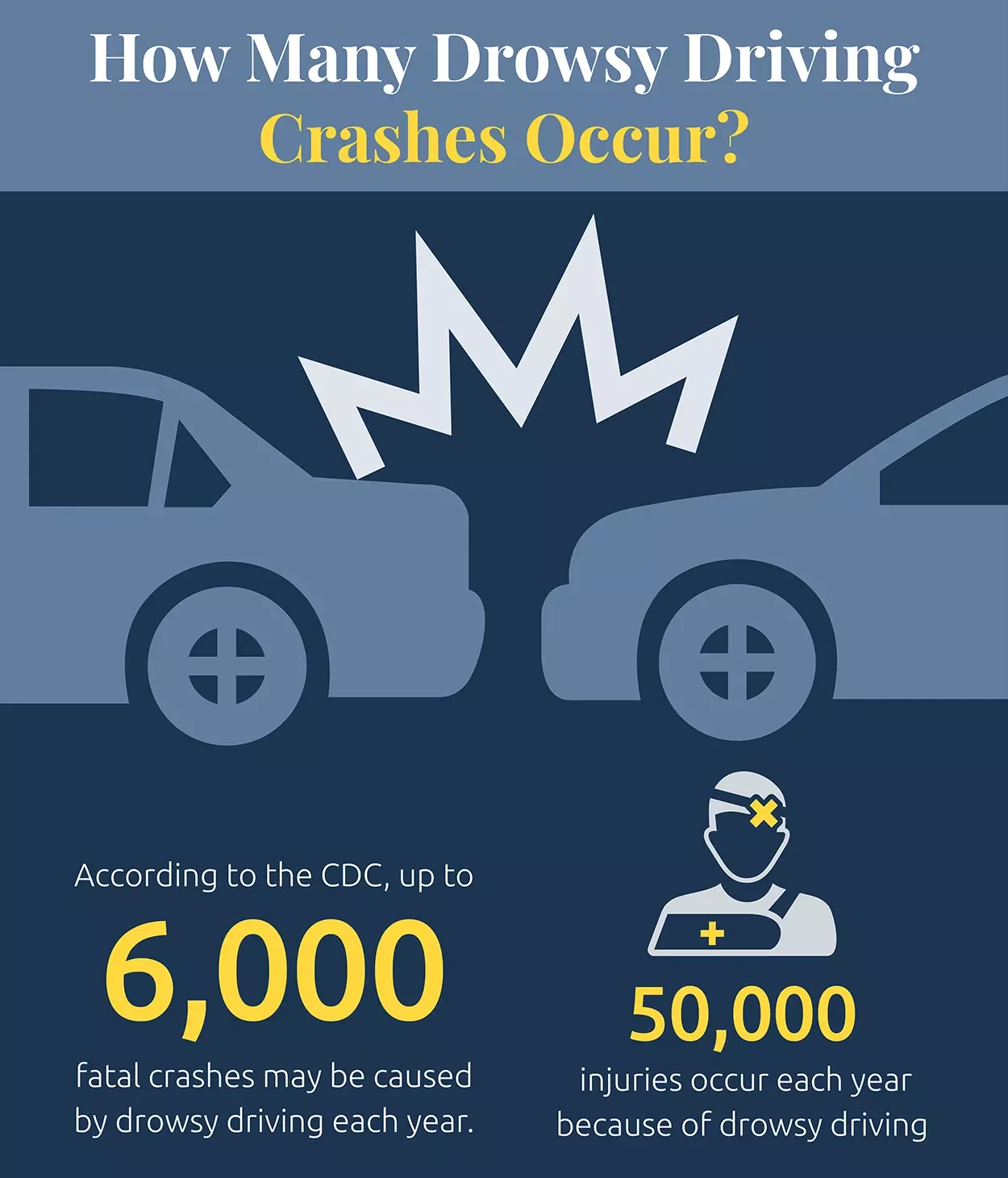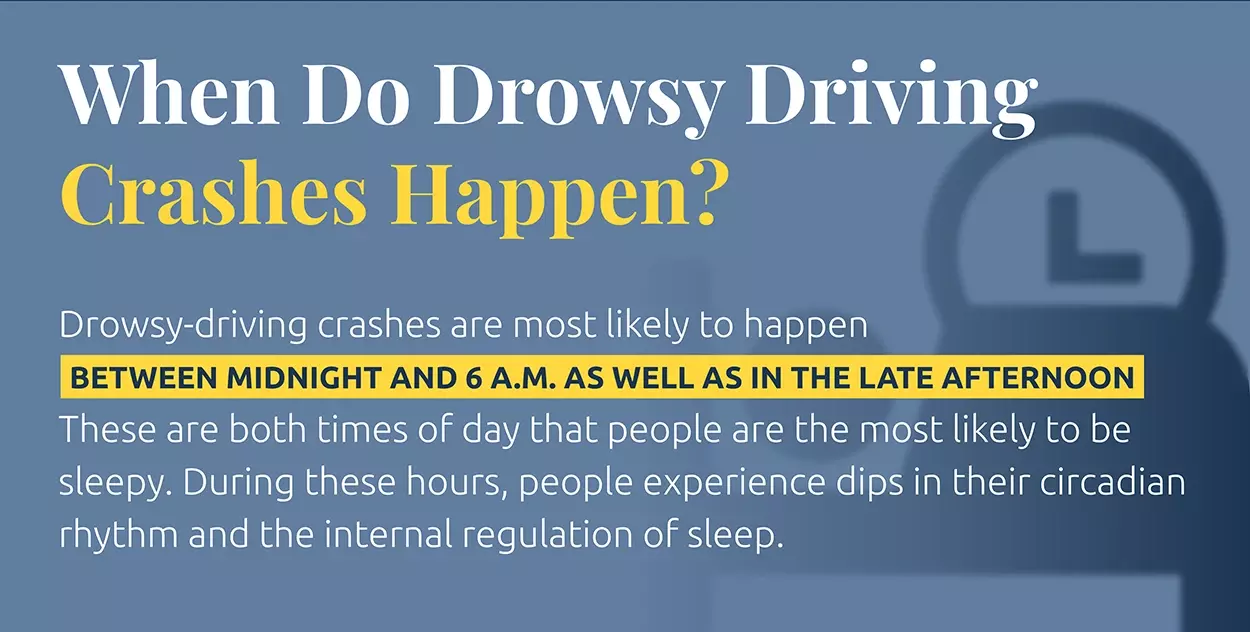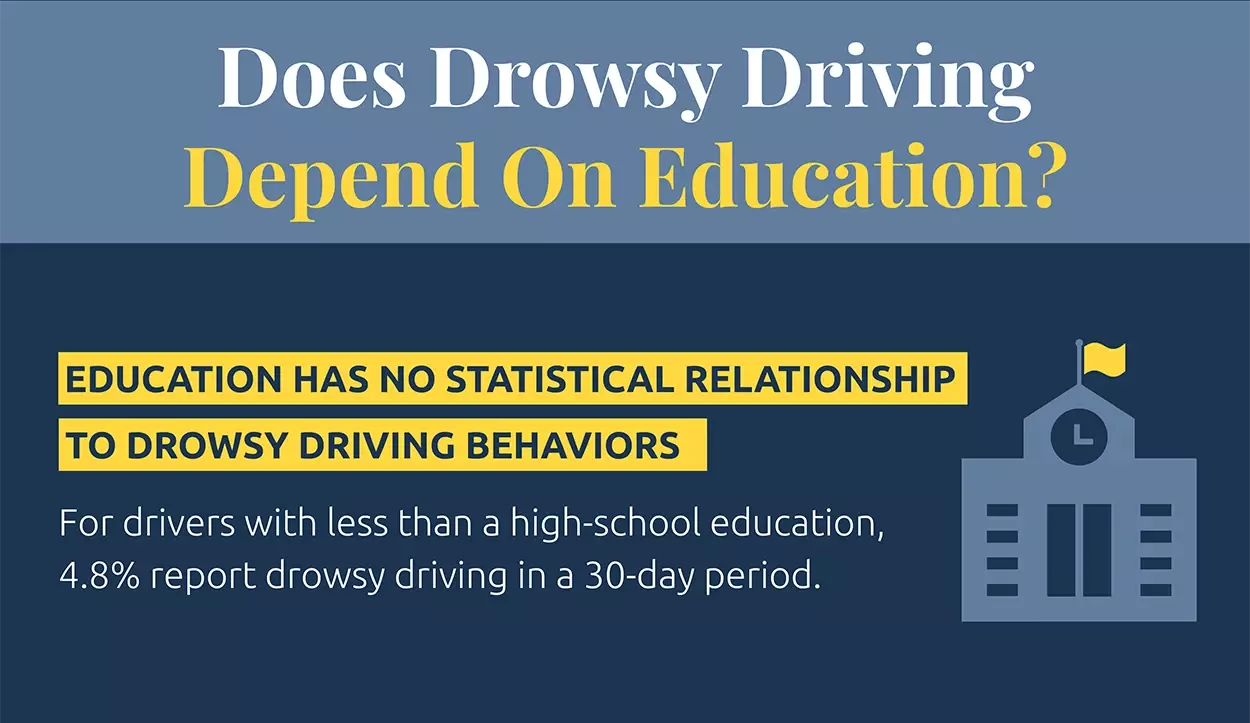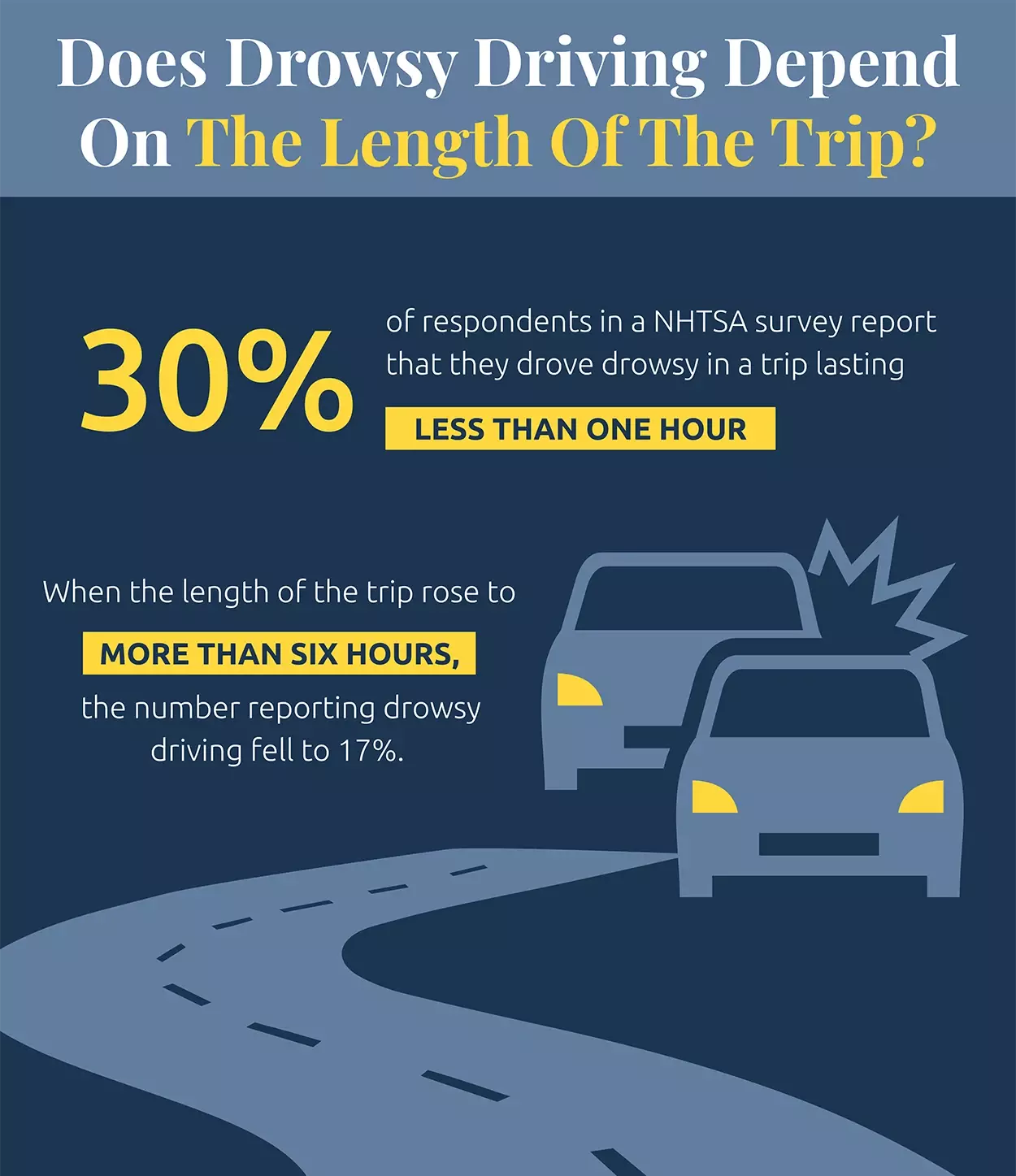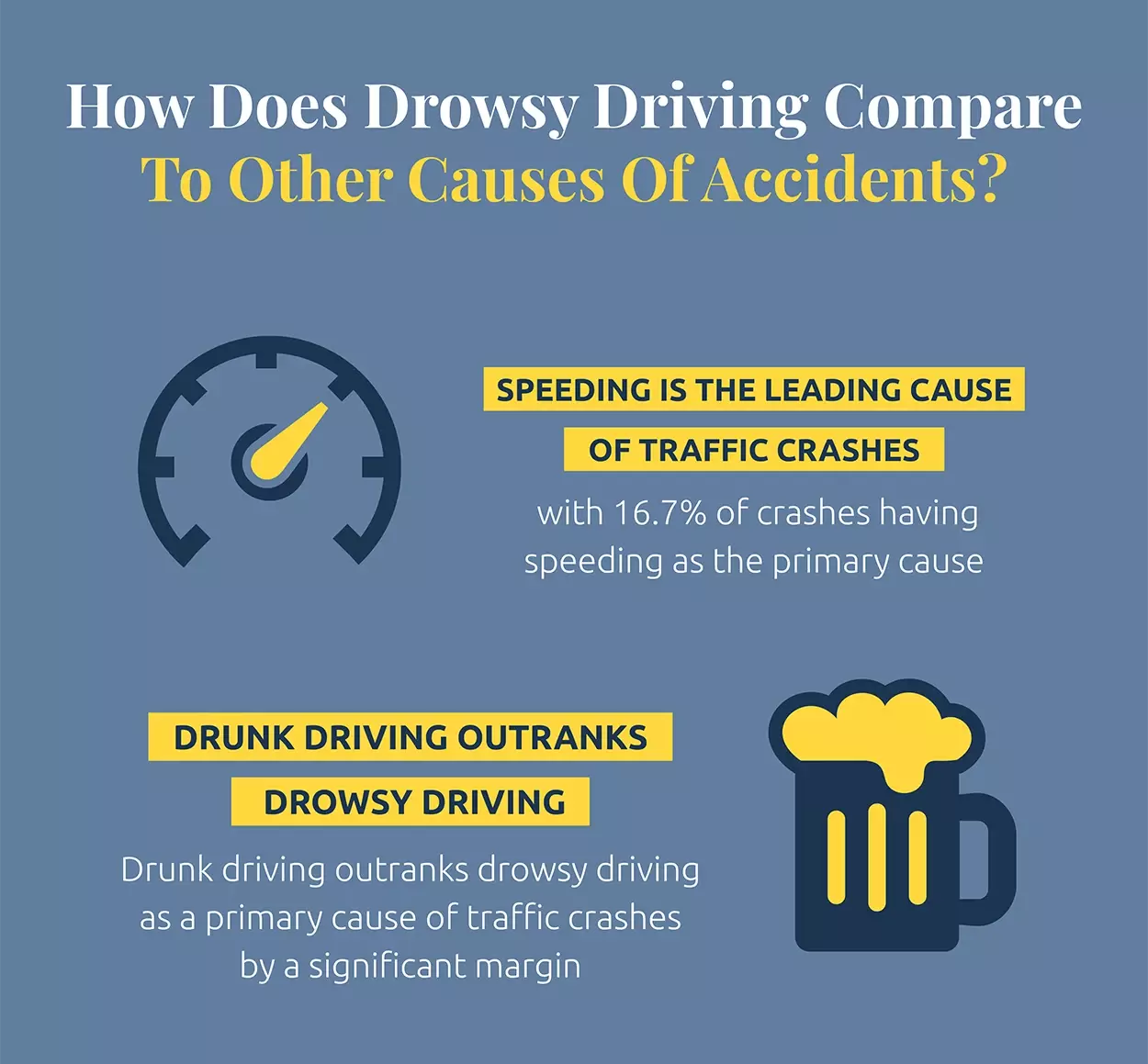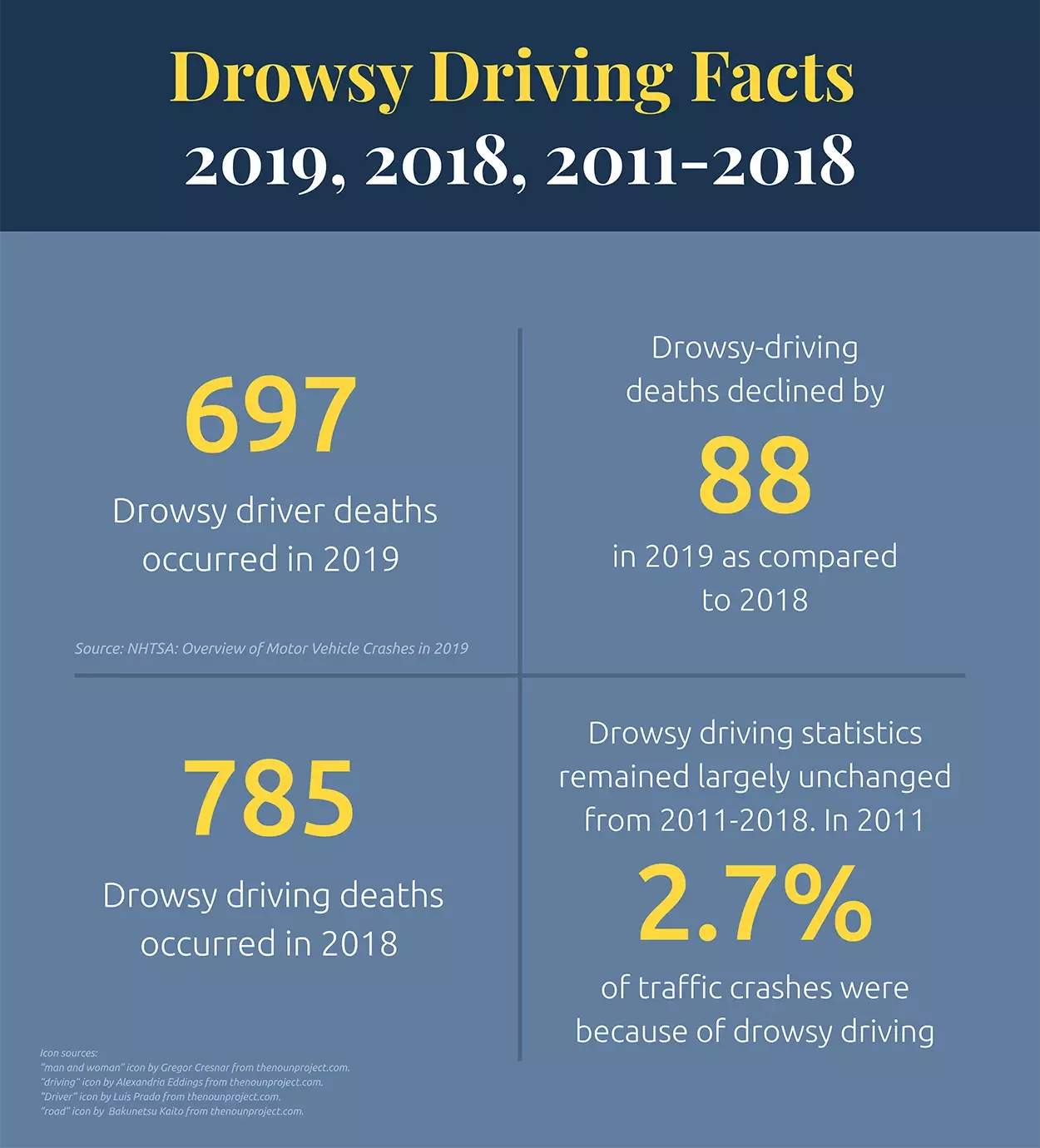Drowsy driving – People know it’s dangerous. Still, too many people get behind the wheel when they haven’t had enough rest. Statistics highlight the severity of the problem. The car accident lawyers at David Aylor Law Offices have compiled these statistics that explain the problem of drowsy driving.
The basics – Who is driving drowsy?
- 4% of drivers report having fallen asleep while driving in the last 30 days. That’s 1 in 25 drivers. (CDC: Drowsy Driving: Asleep at the Wheel)
- Drivers under the age of 24 report falling asleep while driving more than any other age group. (NHTSA: Drowsy Driving Research and Program Plan)
- Young drivers ages 16-24 are nearly twice as likely to have drowsy driving as a contributing factor in a crash than drivers ages 40-59. (NHTSA: Drowsy Driving Research and Program Plan)
- 37% of drivers say they have fallen asleep at least once in their driving history. (CDC: Morbidity and Mortality Weekly Report)
- Men are more likely to drive drowsy than women. 5.3% of men report driving drowsy while 3.2% of women admit to drowsy driving. (CDC: Morbidity and Mortality Weekly Report)
- Among various employment statuses, retirees are the least likely to drive drowsy. Only 1% of retired drivers reported driving drowsy in the last 30 days. By comparison, students and homemakers report drowsy driving at a rate of 2.1%. For unemployed individuals, the drowsy driving rate in a 30-day period is self-reported at 3.1%. Those who report as unable to work report drowsy driving at a rate of 6.1% in a 30-day period. (CDC: Morbidity and Mortality Weekly Report)
Is drowsy driving serious?
- 95% of drivers say that drowsy driving is a major threat to safety. (NHTSA: Drowsy Driving Research and Program Plan)
- 2% of drivers say that driving drowsy is unacceptable. (CDC: Morbidity and Mortality Weekly Report)
- 4% drivers report having a hard time keeping their eyes open while driving in the last 30 days. (NHTSA: Drowsy Driving Research and Program Plan)
- 4% of drivers report drowsy driving “often” or “regularly.” (NHTSA: Drowsy Driving Research and Program Plan)
- Drivers who haven’t slept in more than 20 hours have the same driving ability as someone with a bodily alcohol content of a drunk driver (.08% BAC). (NSC: Drivers are Falling Asleep Behind the Wheel)
- A driver is about three times more likely to crash their car if they are drowsy. (NSC: Drivers are Falling Asleep Behind the Wheel)
- 1 in 8 crashes that result in hospitalization involve drowsy driving. (AAA: The Prevalence and Impact of Drowsy Driving)
- 7% of crashes that require a vehicle to be towed have distracted driving as a contributing factor. (AAA: The Prevalence and Impact of Drowsy Driving)
- 57% of drowsy driving crashes involve drivers who drift into other lanes, oncoming traffic or off the road. (AAA: The Prevalence and Impact of Drowsy Driving)
How many drowsy driving crashes occur?
- According to the CDC, up to 6,000 fatal crashes may be caused by drowsy driving each year. The National Safety Council puts that number definitively at 1,500 deaths due to drowsy driving each year. (CDC: Drowsy Driving: Asleep at the Wheel; Bankrate: Drowsy Driving Statistics and Facts 2021)
- 91,000 crashes each year involve drowsy drivers. (NHTSA: Drowsy Drivers)
- 50,000 injuries occur each year because of drowsy driving. (CDC: Drowsy Driving: Asleep at the Wheel, Drive alert and stay unhurt)
- The National Highway Traffic Safety Administration reports 697 confirmed drowsy driving deaths in 2019. However, they believe that number is underreported, and the true number may be up to 6,000 fatal crashes each year because of drowsy driving. (CDC: Drowsy Driving: Asleep at the Wheel, Drive alert and stay unhurt)
- NHTSA estimates that 2-20% of all motor vehicle traffic deaths have drowsy driving as a cause or a contributing factor. The National Safety Council reports 9.5% of crashes having drowsy driving as a cause of the crash. (NHTSA: Drowsy Driving Research and Program Plan; Bankrate: Drowsy driving statistics and facts 2021)
- As many as 2.5% of fatal crashes and 2.0% of crashes with injuries have drowsy driving as at least a contributing factor. Injury and death rates are higher in crashes involving drowsy driving than in crashes with other causes, possibly because the driver is not alert to take evasive action including slowing speed. (CDC: Morbidity and Mortality Weekly Report)
*It may not be completely clear how many drowsy-driving crashes occur each year. Researchers look at correlating factors to estimate causes and contributing factors to motor vehicle crashes. (NHTSA: Drowsy Driving Research and Program Plan)
When do drowsy driving crashes happen?
Drowsy-driving crashes are most likely to happen between midnight and 6 a.m. as well as in the late afternoon. These are both times of day that people are the most likely to be sleepy. During these hours, people experience dips in their circadian rhythm and the internal regulation of sleep. (National Institute for Occupational Safety and Health: NIOSH Training for Nurses on Shift Work and Long Work Hours)
Does drowsy driving have to do with sleep patterns?
- Individuals who report difficulty sleeping in general are more likely to be drowsy drivers. Those who self-report poor sleep 14+ nights in a 30-day period are twice as likely to report drowsy driving (6.8%) than those who say they got enough sleep in the same period (3.2%). (CDC: Morbidity and Mortality Weekly Report)
- People who report snoring are more likely to be drowsy drivers. 5.6% of those who report snoring also report drowsy driving, while 3.2% of those who say that they do not snore say they have driven drowsy in the last 30 days. (CDC: Morbidity and Mortality Weekly Report)
- For those who sleep less than 6 hours a night, 6.7% report driving drowsy in a 30-day period. For drivers who get 7-9 hours of sleep, the drowsy driving rate falls to 2.6%. (CDC: Morbidity and Mortality Weekly Report)
Does drowsy driving depend on education?
Education has no statistical relationship to drowsy driving behaviors. For drivers with less than a high-school education, 4.8% report drowsy driving in a 30-day period. When a driver has a high school diploma but no college, the number falls to only 4%. However, the figure rises again for drivers with some college education or more. For college-educated drivers, 4.2% report drowsy driving behaviors. (CDC: Morbidity and Mortality Weekly Report)
*Many statistics for drowsy driving are based on survey self-reporting. When individuals self-report their drowsy driving behaviors, the numbers may be underreported. Self-reporting is one of the challenges of gathering statistics for drowsy-driving behavior.
Does drowsy driving depend on the length of the trip?
Drowsy driving occurs in significant amounts when the length of the trip is short or long. 30% of respondents in a NHTSA survey report that they drove drowsy in a trip lasting less than one hour. When the length of the trip rose to more than six hours, the number reporting drowsy driving fell to 17%. (Bankrate: Drowsy Driving Statistics and Facts 2021)
How does drowsy driving compare to other causes of accidents?
- Speeding is the leading cause of traffic crashes, with 16.7% of crashes having speeding as the primary cause. By comparison, the same source ranks drowsy driving as the leading cause of 2.4% of traffic accidents. (Bankrate: Drowsy driving statistics and facts 2021)
- Drunk driving outranks drowsy driving as a primary cause of traffic crashes by a significant margin. Alcohol, drugs or medication are the leading cause in 10.1% of crashes, making them the leading cause of traffic crashes after speeding. According to Bankrate, reporting statistics from NHTSA, drowsy driving is the 13th-leading cause of traffic crashes. There are more traffic crashes from careless driving (5.4%) and distracted driving (5.2%) than from driving while drowsy. (Bankrate: Drowsy driving statistics and facts 2021)
What is the economic cost of driving while drowsy?
Drowsy driving costs the economy $109 billion each year. (NSC: Drivers are Falling Asleep Behind the Wheel)
Drowsy Driving Facts 2019, 2018, 2011-2018
- 697 drowsy driver deaths occurred in 2019. (NHTSA: Overview of Motor Vehicle Crashes in 2019)
- Drowsy-driving deaths declined by 88 in 2019 as compared to 2018 (11.2% decrease). (NHTSA: Overview of Motor Vehicle Crashes in 2019)
- 785 drowsy driving deaths occurred in 2018 (NHTSA: Overview of Motor Vehicle Crashes in 2019)
- Drowsy driving statistics remained largely unchanged from 2011-2018. In 2011, 2.7% of traffic crashes were because of drowsy driving. In 2018, that number changed only to 2.4%. During the period from 2011-2018, the percent of crashes attributed to drowsy driving ranged from 2.4% to 2.9%. (Bankrate: Drowsy Driving Statistics and Facts 2021)
Sources:
AAA: The Prevalence and Impact of Drowsy Driving
CDC: Drowsy Driving: Asleep at the Wheel
CDC: Drowsy Driving: Asleep at the Wheel, Drive alert and stay unhurt
CDC: Morbidity and Mortality Weekly Report
NHTSA: Drowsy Drivers
NHTSA: Drowsy Driving Research and Program Plan
NHTSA: Overview of Motor Vehicle Crashes in 2019
NSC: Drivers are Falling Asleep Behind the Wheel
Bankrate: Drowsy Driving Statistics and Facts 2021



